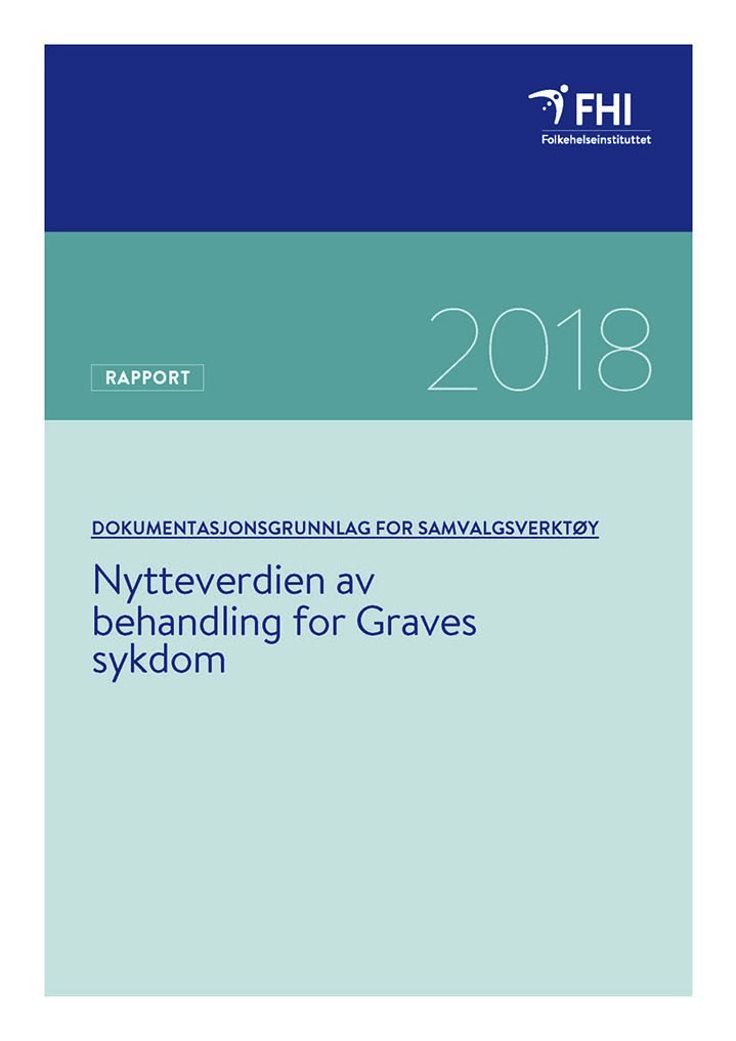Effectiveness of treatment for Graves’ disease: evidence base for a shared decision making tool
Mapping review
|Published
My treatment options “Mine behandlingsvalg” commissioned the Norwegian Institute of Public Health to find and summarize key findings from systematic reviews about relevant treatment options to ease the symptoms among patients with Graves’ disease.
Key message
Graves' disease is an autoimmune disease. Helsenorge.no describes that in people with Graves' disease, the immune system forms antibodies that stimulate the thyroid gland to increased production of the hormone thyroxin. Graves' disease is the common cause of high metabolism among younger people. The disease can cause unexplained weight loss, heartbeat, nervousness, restlessness, heat intolerance and eye problems. There are several treatments that can help.
My treatment options “Mine behandlingsvalg” commissioned the Norwegian Institute of Public Health to find and summarize key findings from systematic reviews about relevant treatment options to ease the symptoms among patients with Graves’ disease.
We included four systematic reviews about the effectiveness of:
- medication
- radioiodine therapy
- surgery
We prepared summary of findings tables and plain language sentences to summarize the results. Bottom line for the main outcome symptoms, such as relapse is:
- total tyreoidectomy probably is probably associated with recurrences to hypothyroidism compared to subtotal tyreoidectomy
- total tyreoidectomi is probably associated with fewer recurrences to hypothyroidism compared to bilateral subtotal tyreoidectomy
- bilateral subtotal thyreoidectomy is probably associated with more recurrences to hypothyroidism compared to Dunhill procedure
- high dose antithyroid drugs compared to low dose gives little or no difference in recurrences to hypothyroidism
- radioiodine compared to metimazole suggests fewer recurrences to hypothyroidism, but we are uncertain because we have very little confidence in the evidence


